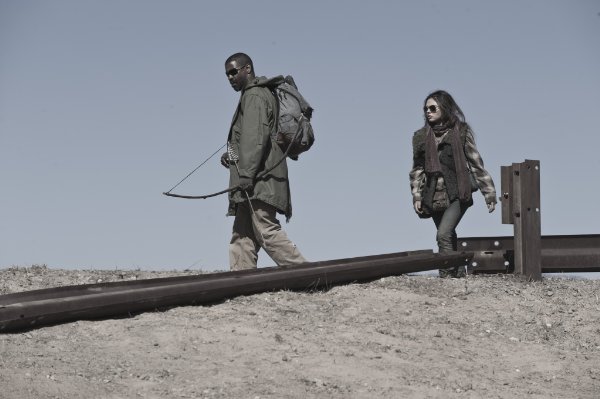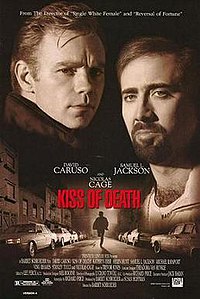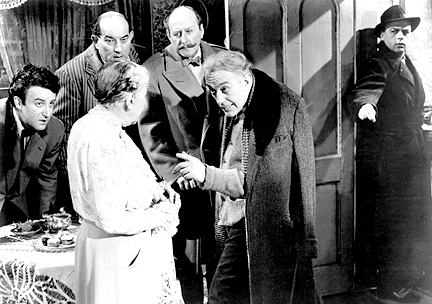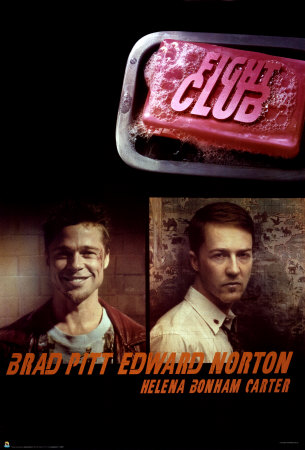DIR: Ron Clements / John Musker
VOICES: Anika Noni Rose, Bruno Campos, Keith David,
Jim Cummings, Michael-Leon Wooley

The path that John Lassetter’s career has taken is more ironic than most. Lassetter is the driving creative voice at Pixar, he directed Toy Story and, along with his company, brought CG animation to such prominence that it all but destroyed hand drawn animation, certainly in the US. Walt Disney did what was previously unthinkable; they closed their hand drawn animation department, effectively laying off animators who had spent their whole careers at the studio. Then Disney bought Pixar, and Lassetter became Chief Creative Officer of both companies. His first act was to re-open feature animation, and re-hire Ron Clements and John Musker, who had directed The Little Mermaid and The Lion King, among others.
The Princess and the Frog is Disney’s first hand drawn film in seven years, but it’s got a vibrancy and a classic feel that had been missing for rather longer. I grew up with the second golden age of Disney; The Little Mermaid, Aladdin, and the peerless Beauty and the Beast, and The Princess and the Frog was like a door opening, letting me back into my childhood for 90 minutes. The story, like many told in Disney’s animated films, is a twist on a famous fairy tale. In 1920’s New Orleans the vain and lazy Prince Naveen (Campos) is turned into a frog by voodoo practitioner Dr. Facilier (David). At a party Naveen mistakes poor, working class Tiana (Rose) for a princess, and asks him to kiss her, and lift his curse. When they kiss Tiana also becomes a frog, and then their quest to become human once more begins. It’s nice and simple, very traditional in a lot of ways, but this is also a notably different Disney film.
It is notable that Tiana is Disney’s first African-American ‘princess’, but that’s not what’s most interesting, or most different, about this character. All Disney films have a moral message at their heart, and The Princess and the Frog’s is that nothing worth having is obtained without hard work. Tiana is no vapid dreamer waiting for a man to come and rescue her (though there is one of those in this film, hilariously played by Jennifer Cody), she’s working two jobs and has spent her whole life scrambling to save money to open a restaurant. The rich layabout Prince would previously have been tolerated, but here Tiana berates him for his lack of drive, it’s an interesting reversal, and a much more meaningful change to the character of Disney princess than a mere choice of the colour that she’s painted.
For the most part Clements and Musker cleave close to classical Disney style with the look of this film; the jazz playing crocodile Louis (Wooley) wouldn’t seem out of place in the earlier classics, and neither would Tiana, Naveen or Naveen’s scheming valet Lawrence (Peter Bartlett, who seems to be doing an impression of Timothy Spall in Enchanted). A few characters, however, do stretch the imagination of the designers a bit further. Dr. Facilier is the film’s most stylised character, with his thin, spindly legs giving way to an imposing torso and face. He and his ‘friends from the other side’, who appear as shadow monsters, may be a little scary for the very young, but they are perhaps the most striking characters in the film in both their design and their animation. There is also a beautifully stylised, deco look, sequence for Tiana’s ‘I want’ song (which, in keeping with the film’s theme, is about how her hard work had got her “Almost There”). On the whole though, traditional or stylised, the film fits together beautifully, its look all very much of a piece and the animation is stunningly fluid.
The screenplay, by Clements, Musker and Rob Edwards is full of memorably eccentric characters who are destined to become beloved Disney classic. This is most obviously the case with Ray; a Cajun firefly voiced by Jim Cummings, he starts off as (very successful) comic relief, but his love for a ‘girl’ named Evangeline ends up providing the film with some of its most moving moments and Cummings balances these two sides of Ray beautifully. Another riotously entertaining turn is served up by animator Andreas Deja and Jennifer Lewis, when Tiana, Naveen, Louis and Ray visit voodoo woman Mama Odie, who is 197 and blind. Deja is a past master of character animation, and he gives Mama Odie (and her guide snake) such life that you want more than just the one hilarious scene with her. I always knew I was going to be in for some fun with The Princess and the Frog, but what I didn’t expect was to be so moved, one late twist may upset the kids a great deal, but it will likely get to the adults too and the love story between Tiana and Naveen is well told, and genuinely involving.
There are only a few downsides to the film. The biggest is that the reason that Dr. Facilier wants to turn Naveen into a frog to begin with is never really very clear, and second tier villain Lawrence is never very effective. There are some toe tapping tunes from Randy Newman too, but also a few that fall flat, and sometimes a song swells on the soundtrack just a little too often, breaking up what is an involving story a little more than is necessary. On the whole though this is about as good a return as Disney’s classic style could have hoped for. It modernises where required, but still has the feel and form that are so beloved of Disney, it’s a treat for kids and adults alike and I can’t imagine anything better to do with the children over half term.
Precious
DIR: Lee Daniels
CAST: Gabourey Sidibe, Mo’Nique,
Paula Patton, Mariah Carey

Lee Daniels’ acclaimed film has been doing the rounds since Sundance 2009, and even the worst reviews have generally breathlessly praised the performances. Some critics have decried the film’s depiction of black family life, but given that one of the more notable of those reviews from a man who singled out Norbit as a positive depiction of the black experience you can ignore much of that fuss. Precious isn’t a film about a community as a whole, it’s about one hideously abusive family, and anyway, it’s not as if it doesn’t also have positive (angelic, even) black role models. This is perhaps the big problem with the film; it’s very black and white, not in racial but in moral terms. People are either saintly (Patton’s teacher, Carey’s social worker, Lenny Kravitz’ male nurse) or they are essentially evil incarnate (Mo’Nique as Precious’ mother). The only really shaded character is Precious herself, and even she is generally depicted as a shining force of goodness.
Despite the limitations that such thin writing places on the actors there are some genuinely brilliant, searing and hugely surprising performances in the film. Mo’Nique is someone I’d barely heard of previously, aside from having seen a review of her ‘comedy’ Phat Girlz. It seems that somewhere behind that apparently deeply unfunny persona there lie deep reserves of dramatic acting talent. Her performance is likely to win her an Oscar, and it will be absolutely deserved if it happens. The character is basically a monster, but Mo’Nique finds so much more in there, it’s a deeply chilling performance, never more so, perversely, than when a social worker visits the family and Mary has to play nice. It’s so forced, so fake, so obvious that the monster is just itching to come out. It’s an incredibly compelling and scary scene, because for once you don’t know what to expect of the character.
Another shock is the performance of Mariah Carey, her last notable film, the star vehicle Glitter, was just about laughed out of cinemas. Here she’s utterly unrecognisable, she's got no make up (save for to give her the appearance of a small moustache), wears a shapeless muddy brown wig and baggy clothes. If I hadn’t known it was her ahead of time I’d never have spotted Carey. She gives a skilful performance, very down to earth, as a woman used to keeping her emotions back, and when she can’t anymore, at the film’s climax, it’s done in a beautifully small and subtle way.
Next to these two unexpectedly brilliant turns Paula Patton comes off poorly, but that’s likely more to do with the fact that her character is so poorly written - she really couldn’t be any more saintly if she wore a halo and had a choir of angels accompanying her every appearance. Patton does what she can with this one note, but there’s nothing there for her. Gabourey Sidibe has been attracting plaudits since Sundance, and she too is likely to be Oscar nominated for this, her film debut. Certainly she has presence, and gives a fine performance, but again she just rather pales next to, in particular, Mo’Nique and again, despite attempts to fill in some of her hopes and dreams though (embarrassingly poor) dream sequences, she comes off as a rather thin and ultimately rather passive character, seeming at times more a vehicle for the story than anything else.
However, the big problem at the centre of the film isn’t the screenplay or the acting, it’s Lee Daniels’ often howlingly terrible direction. The dream sequences are just a total miscalculation; a filmic device that utterly breaks the flow and verisimilitude of the film’s Harlem setting and late 80’s period. His handling of Precious' education is also poor, with a class straight out of the Dangerous Minds handbook, but what’s most troubling is the way that Daniels shoots the violence and the rape scenes. Precious has been called poverty porn, and when, in the film’s first five minutes, we get slow motion shots of the abuse being meted out to Precious, I can see where that criticism comes from. Often the film dwells in its most extreme moments of degradation to a slightly troubling degree. It may boast some brilliant performances, but I found Precious an ugly and depressing, as well as a cinematically flawed, experience.
Brothers
DIR: Jim Sheridan
CAST: Natalie Portman, Tobey Maguire, Jake Gyllenhaal,
Bailee Madison, Taylor Geare

I went into Brothers (a remake of the Susanne Bier's Brødre, which I haven't seen) somewhat reluctantly, having seen an appalling clip from it on Film 2010, but I went expecting that I’d get to have some fun ripping it apart in a review. 104 minutes later I came out, largely pleasantly surprised. I wish I could give the film as a whole a better review, because there are lot of really good things in it. Jake Gyllenhaal and Tobey Maguire play the titular brothers, Tommy and Sam Cahill. Tommy has just come out of prison and Sam is shipping off to Afghanistan again. When Sam’s helicopter crashes his wife Grace (Portman) and daughters (Madison and Geare) are told that he’s dead. Actually Sam has been captured, and while he’s struggling to survive his brother is growing closer to his wife and kids, meaning that everything comes to a head when Sam returns home.
One of the more obvious potential problems with Brothers is the casting. Sam and Grace are clearly supposed to have been married for some time (their eldest daughter is nine), but the cast seem quite young for their roles (okay, Maguire is 34, but he still looks a lot younger). However, this doesn’t actually become as much of an issue as it might have, because for the most part the cast give mature performances that help to overcome their youthful looks. Natalie Portman, a variable actress who clearly needs a strong directorial hand, gives her best performance in some time as Grace, both the love she feels for her husband and the way she grieves for him are subtly played, but both seem deeply felt. She’s also a plausible parent, working well with the young actresses playing her daughters and finding a lot of real little moments in the way she behaves with them.
Jake Gyllenhaal is also strong, making the way his character grows; stepping up to the plate when his brother is thought dead, feel organic, and his strong chemistry with Portman makes their attraction play well as an undertone in quite a few scenes before it becomes something stronger. Perhaps the best performances in the film come from nine year old Bailee Madison and seven year old Taylor Geare, who are both wonderful as Maguire and Portman’s daughters. Jim Sheridan showed with In America (a terribly underseen film) that he was able to get great work from kids, and he does it again here with the help of David Benioff’s script, which gives the children some deep emotional places to go to, but always remembers that they are children, not small adults. Among the support there’s also good work from Sam Shepherd, Mare Winningham and Clifton Collins, Jr.
Sadly the weak link among the cast, and the one who at times threatens to bring the film tumbling down, is Tobey Maguire. First off, I just don’t buy him as a hardass marine, despite the jarhead haircut and the fact that he’s in great shape he just doesn’t give off that toughness. He’s not bad in the scenes before he ships out, building a nice connection with Portman and the kids, but in Afghanistan and when he comes home Maguire is way over the top, and unbalances the otherwise rather low key tone of the film. In what should be the film’s big emotional climax, Maguire goes completely off the deep end, giving a performance so risibly bad that I couldn’t help laughing. In the end I think the whole would be better had Gyllenhaal and Maguire swapped parts, because Tommy’s part lacks the operatic notes that Maguire so catastrophically misses.
It’s a shame that there’s such a gaping hole in Brothers, because aside from that performance the film is excellent. Sheridan’s direction isn’t flashy, but it gets the job done and a strong cast give the best of themselves despite a slightly implausible story. This isn’t a great film, which is a pity, because it could have been, but it is certainly worth seeing and persevering with.










.jpg)





















